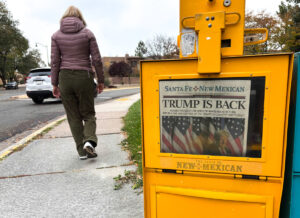The niche-ification of today’s media landscape
Things have changed in the last 10 years.

Matthew Levison is global head of consumer at KWT Global.
If you gathered a group of journalists and thought leaders across the media landscape a decade ago to discuss the future of the industry, it would have lasted about 15 minutes, as the group simultaneous and emphatically proclaimed “print is dead and digital is king.” While at the time these claims felt alarmist, they also resonated as bold and visionary. Many moguls who made these declarations were seen as the realists, willing to say the quiet part out loud. A decade later, we still hear many of these statements and themes peppered through roundtables, bylines and keynotes, but today they feel reductive and out of touch. While it’s certainly true that the past decade has seen a reduction and refocusing of the print media landscape and the digital world thrives, the two are intimately linked alongside a far more nuanced ecosystem that sees the interconnectivity across print, digital, social and broadcast that complements and elevates the whole.
To further explore the dynamic between these various channels and unpack the interplay between them, KWT Global gathered a diverse set of editors and media leaders at the forefront of innovation across each, from Good Morning America, Cosmopolitan, Dossier and PS (formerly PopSugar). The insights in this piece are largely drawn from that discussion.
As digital platforms flourished and our media soothsayers began divining the impending print demise, online opportunities felt endless. Facing limitless audiences with instant access at their fingertips, the great traffic wars began, and the prevailing philosophy became “clicks at any cost.” Page views became king, and more eyeballs meant more money. That worldview reigned supreme throughout the birth and growth of digital, but about five years ago, a shift in thinking began to take hold and permeate editors across channels and outlets. With mass appeal, the “do it all” approach to editorial, and the rejection of specialized and focused brand growth came less loyal, less interested and less active readers.
While audience size and reach will always be an important part of a marketer’s mindset, alongside the media landscape, we too have grown, bringing a more sophisticated approach that prizes a qualified and engaged audience over a massive and mildly focused one. As both marketers and media leaders saw the value in a more tailored approach to content and the energized and active audience it brings, the industry’s next big course correction began, the niche-ification of today’s media landscape.
One of the most recent and visible manifestations of niche-fication is the recent full rebrand of PopSugar to PS. A complete overhaul that refocused and reframed the platform to double down on what they do best, driving the birth of this postscript to the legacy of the brand. As PS zeros in on real people with real stories and trusted reporting on health and wellness, audience trust grows, loyalty skyrockets, and engagement abounds.
This shift is happening across the industry, whether blatant or subtle, as all our panelists agreed. And what’s critical to the success of this shift toward niche-ification is the symbiotic relationship between a brand’s channels. What you lose in the mass audience you gain in the interwoven multi-point approach that inspires and activates these qualified audiences across multiple touchpoints. No longer is a story a story, as today’s story is tomorrow’s social post showing your product in action, next month’s print spread, and next week’s broadcast segment of best buys. Rather than the adversarial approach that defined the dynamic of the last decade’s media channels, today they work in tandem to strengthen, reinforce and drive to each other.
Smart marketers will embrace the change, dedicating resources and workstreams to a fully integrated multi-channel approach. This structural change should be designed to break down the silos that typically divide an agency to address the growing world of social editorial, the earned space living only on outlets’ social channels and the rise of the journo-fluencers who have become the face of this content. A traditional editorial/influencer agency model is leaving results on the table as more and more value lies in the spaces in between. The agencies that will win are those whose barriers by channel fall away and refocus honing vertical experience to align with the focusing expertise and audience of each outlet.
Today’s media leaders and marketers understand that the whole is greater than the sum of its parts and those that prioritize and respect the brand voice, perspective and authority of these outlets are those that thrive today and are poised to take on whatever shift is coming for us all next.






